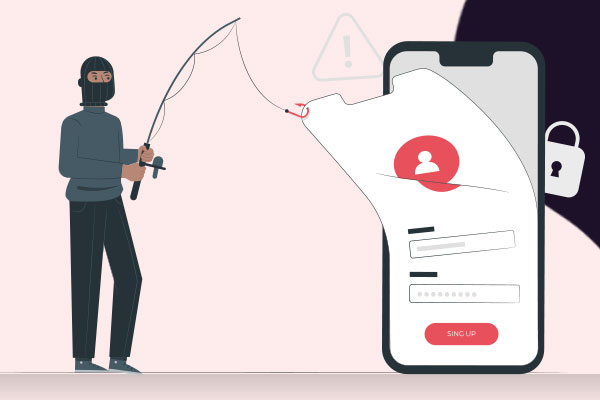Safeguarding Your Identity: A Roadmap to Theft Prevention

With advancement and innovation in technology comes unforeseen exposure to cybercrime. Identity theft is one such threat that involves stealing individual’s personal or financial data to use their identity for fraudulent activities.
Cybercriminals are getting increasingly creative with the methods they use to obtain personal information for identity fraud. They can gain access to hard drives found in stolen or discarded computers, hack into computers or networks, get access to public records, use malware to infect computers, use social media, or use fake emails or text messages to deceive people into sharing their personal details.
Types of Identity Theft:
- Financial Identity Theft: It involves the theft of personal financial information, such as bank account details, credit card details, or loan details, to carry out unauthorized transactions in the victim’s name.
- Tax Identity Theft: Cybercriminals use personal data to submit fraudulent tax returns to obtain a refund. This can result in delays in legitimate tax refunds and potential legal issues.
- Criminal Identity Theft: When criminals are apprehended by law enforcement, they may attempt to conceal their identity, which can lead to lawsuits in legal proceedings for victims who were not involved in the crime. This can have a devastating effect on an individual’s life and can even result in a false criminal record.
- Medical Identity Theft: In this type of fraud, criminals impersonate an individual to obtain medical treatment, pharmaceuticals, or insurance entitlements, leaving victims to foot the bill for their healthcare costs.
How Can Your Identity Be Stolen?
Understanding the methods cybercriminals use is essential to safeguard your identity. Here are some common techniques they use:
1. Phishing involves sending emails or messages that appear to be from legitimate sources, such as banks, which contain links to fake websites that require users to enter sensitive information.
2. Data breaches involve hacking into banks’ and other organizations’ databases to acquire customer information, which can then be used for a variety of fraudulent activities.
3. Social engineering involves manipulating individuals to reveal confidential information, such as by impersonating bank representatives and requesting personal details through telephone calls or social media.
4. Card skimming involves the use of skimming devices attached to ATMs and card readers, which can capture card information during legitimate transactions.
5. Dumpster diving involves searching through discarded documents such as bank statements and credit card statements.
10 Tips to Protect Yourself from Identity Theft:
Now that we’ve explored the ins and outs of identity theft, let’s discuss how you can shield yourself from this threat:
1. Monitor Your Bank Accounts: It is recommended that you regularly review your bank and credit card records for any suspicious transactions. It is also advised that you report any suspicious activity to your bank as soon as possible.
2. Use Strong, Unique Passwords: To ensure the security of your online banking accounts, it is important to create secure and individualized passwords. A password manager can be used to ensure the safety of your accounts.
3. Enable Two-Factor Authentication (2FA): Enable two-factor authentication (2FA) for online accounts whenever feasible. This provides an additional layer of protection by requiring a secondary authentication method, such as an OTP.
4. Beware of Phishing Attempts: It is important to exercise caution when receiving emails or messages requesting personal information. To verify the legitimacy of such requests, contact your bank directly through official contact information.
5. Protect Your Personal Documents: Protect vital documents such as Aadhaar and PAN card details, passports, and financial records. Secure these documents and shred sensitive documents prior to disposal.
6. Secure Your Devices: Make sure your computer and mobile devices are safeguarded with the latest antivirus and firewall software. In case you have Aadhar, PAN card, bank passwords, etc., saved on your digital devices, protect them using password protection apps and anti-malwares.
7. Website Authenticity: Check the website URL and credibility before giving out your personal details and making any transactions. Malicious and unsecured websites pose a threat to your personal details, leaving you vulnerable to identity theft.
8. Regularly Check Your Credit Reports: Get complimentary copies of your credit report from the major credit reporting agencies and examine them for any suspicious activity. You may also want to consider freezing your credit report with all the major credit agencies. This will prevent identity thieves from opening new accounts on your behalf.
9. Educate Yourself: Stay abreast of the most up-to-date identity theft strategies and fraudulent schemes. Awareness is the best weapon against identity theft.
10. Lock Aadhaar Biometric: To strengthen the security citizens can lock their Aadhaar (UID) via UIDAI website (https://www.myaadhaar.uidai.gov.in) or through mAadhaar app. It is a safety feature to stop any kind of biometric authentication. It ensures that no fraudster by any means can perform biometric based Aadhaar authentication for that Aadhaar holder.
As we celebrate Cyber Jagrukta Diwas, it’s crucial to recognize the ever-present threat of identity theft. By understanding the different kinds of identity theft and the ways in which cybercriminals carry it out, and by taking proactive measures to protect one’s financial identity, one can reduce the risk and enjoy the advantages of the digital world safely. Your bank is your best friend in this fight, so do not hesitate to contact them for advice and support in safeguarding your financial details.
Stay Vigilant, Stay Safe!
If you have been a victim, you can register a complaint immediately by dialing 1930 or visit the National Cybercrime Reporting Portal.

 Blog
Blog Blog
Blog



Comments
No comments yet.